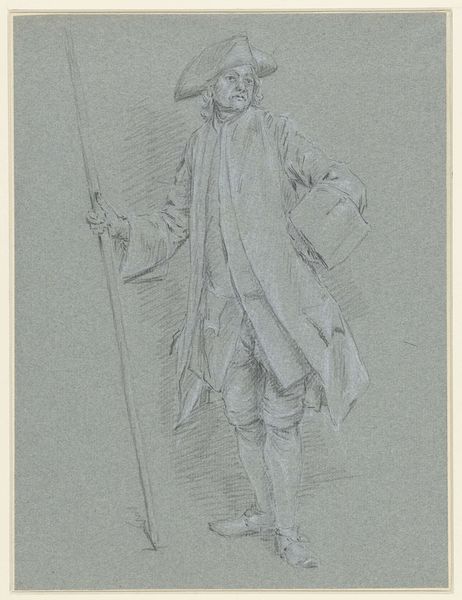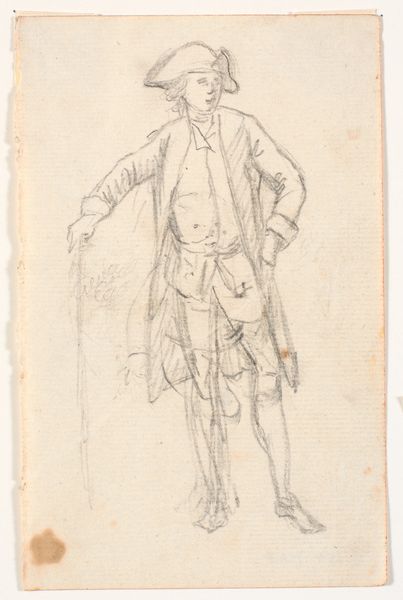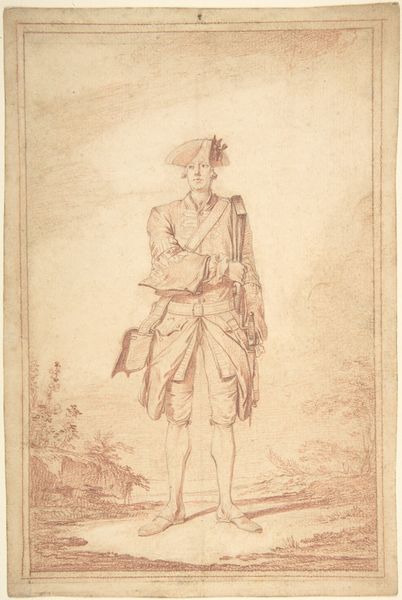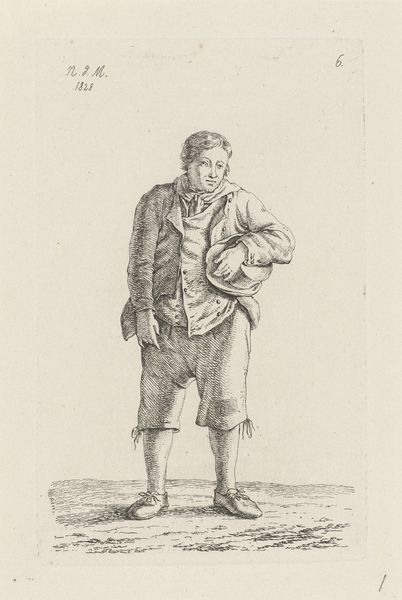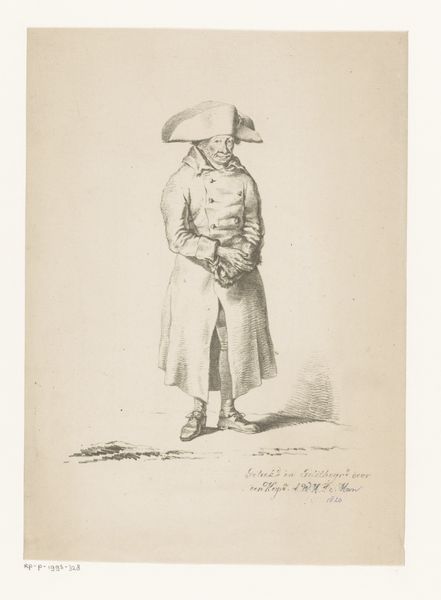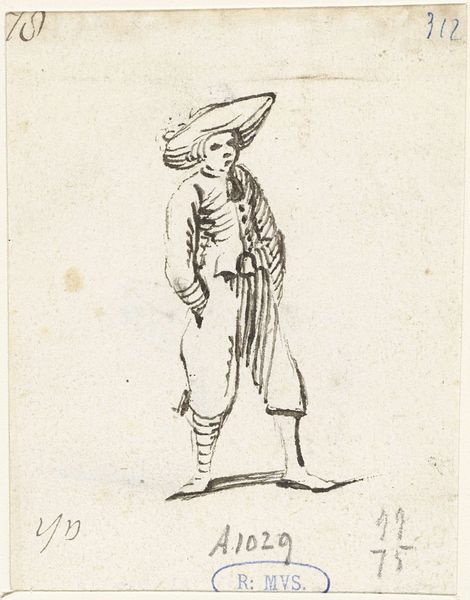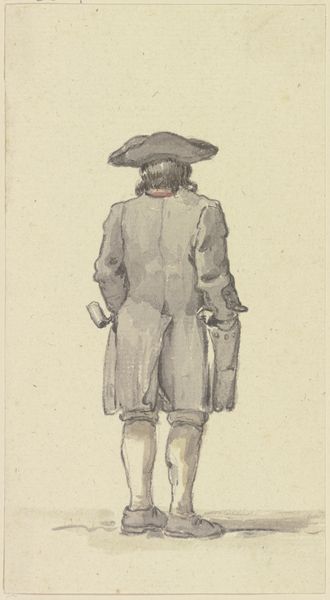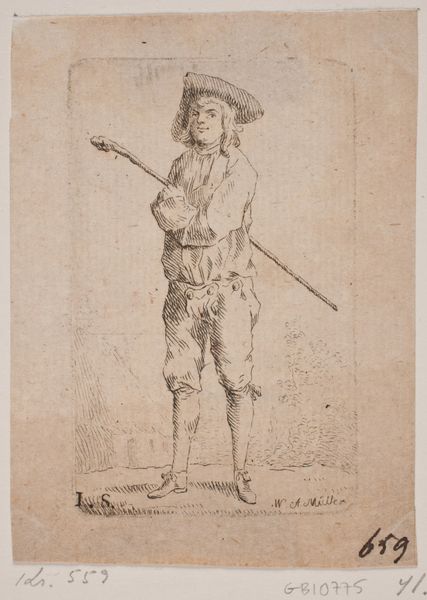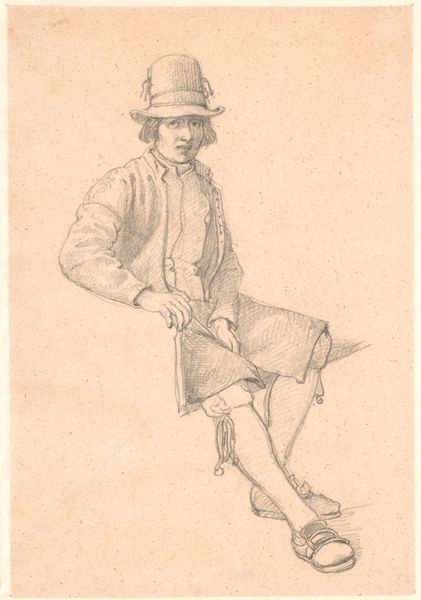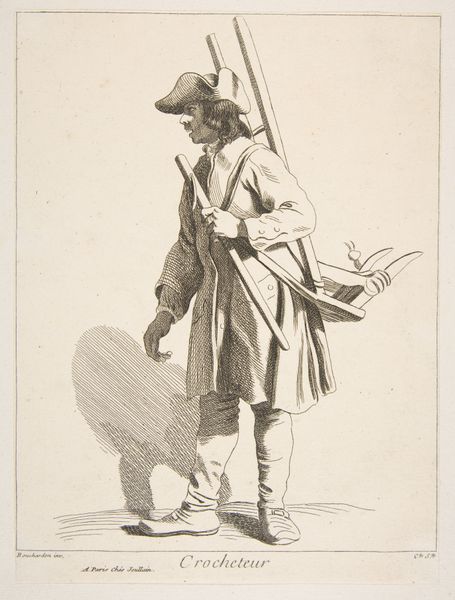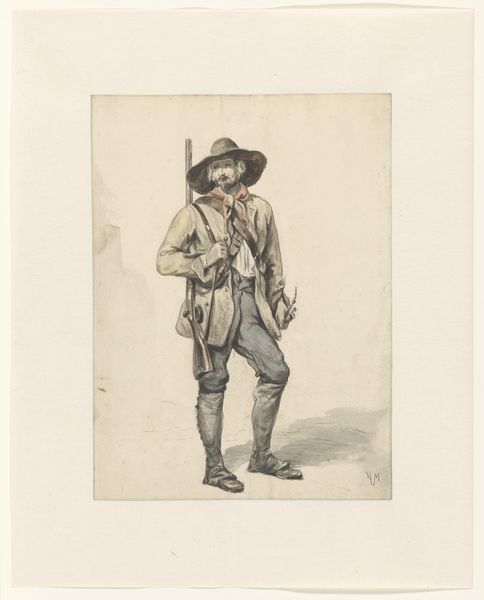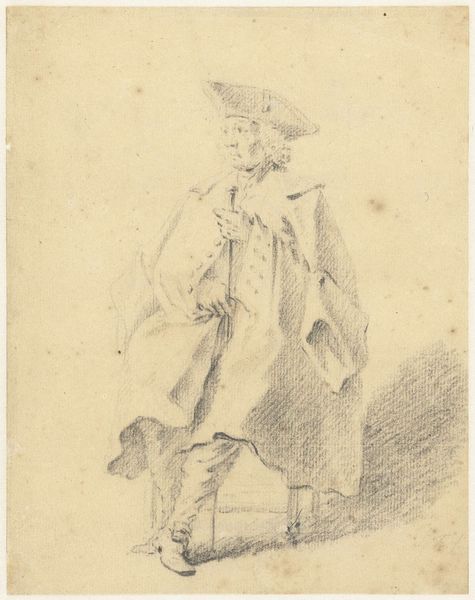
drawing, pencil, chalk
#
portrait
#
pencil drawn
#
drawing
#
baroque
#
pencil drawing
#
pencil
#
chalk
#
15_18th-century
#
sketchbook drawing
#
genre-painting
Copyright: Public Domain
Editor: This drawing, "Flute-playing cavalier" by Cornelis Troost, appears to be rendered in pencil and chalk. It feels like a quick sketch, perhaps a study for a larger painting. What strikes you about the materiality and process evident here? Curator: The visible process is exactly where the intrigue lies. Look at the layers of chalk and pencil; it’s not just about depicting a cavalier, but about the *making* of the image. How does the use of these specific materials—chalk and pencil—affect your understanding of the sitter’s social standing, given the accessibility of such materials compared to, say, oil paints? Editor: That’s a good point. Perhaps the accessibility of the medium democratizes the portrait in some way? Was Troost deliberately choosing less precious materials? Curator: Exactly! Think about the implications: Was this intended for public display, or was it a more private study, perhaps a commentary on the growing merchant class who sought to emulate aristocratic lifestyles, but were constrained by access to different kind of products. The choice of materials speaks volumes about the intended audience and the artwork's function. Editor: So, rather than simply admiring the image, we’re being prompted to consider the socio-economic context that shaped its creation? Curator: Precisely. We must always examine the labor and resources inherent in the artistic process, and how it influences meaning. Does this method create more of a dialogue between artist and audience? Editor: I see that now. Considering the materials and the labor brings so much more context than just the style or subject. Curator: It encourages a critical engagement with not just the image, but also with the economic structures that made the image possible. Hopefully that provides a slightly new avenue of art analysis. Editor: It does! I’ll definitely be paying more attention to the “how” as well as the “what” from now on!
Comments
No comments
Be the first to comment and join the conversation on the ultimate creative platform.
